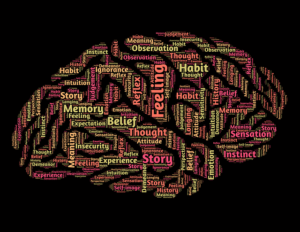If you’re feeling overwhelmed by daily stress, incorporating easy mindfulness techniques can make a noticeable difference. You might find that simple practices like deep breathing or mindful walking not only ground you but also enhance your overall well-being.
These techniques require minimal time and effort, yet their benefits can be profound. Imagine transforming your hectic routine into moments of calm and clarity. Curious about how to seamlessly integrate these practices into your life? Let’s explore some effective methods that could change the way you handle stress.
Breathing Exercises
Breathing exercises are  powerful tools for managing stress and promoting relaxation. When you focus on your breath, you create a moment of pause in your busy life. Deep breathing is one of the simplest yet most effective methods to bring calm to your mind and body. It helps you shift your attention away from stressors and allows you to reconnect with the present moment.
powerful tools for managing stress and promoting relaxation. When you focus on your breath, you create a moment of pause in your busy life. Deep breathing is one of the simplest yet most effective methods to bring calm to your mind and body. It helps you shift your attention away from stressors and allows you to reconnect with the present moment.
To start, find a comfortable position, whether sitting or lying down. Close your eyes and take a deep breath in through your nose, allowing your abdomen to rise. Hold that breath for a moment, then gently exhale through your mouth, feeling your body relax with each release.
As you practice this deep breathing, try to cultivate breath awareness. Notice how your body feels as you inhale and exhale. Pay attention to the rhythm of your breath and how it affects your state of mind.
You might find it helpful to count your breaths. Inhale for a count of four, hold for four, and exhale for four. This not only keeps you focused but also slows your heart rate and calms your nervous system.
Whenever you feel overwhelmed, taking just a few minutes to engage in deep breathing can make a significant difference. You’ll feel more grounded and centered, ready to face whatever challenges come your way.
Body Scan Meditation
Body scan meditation is a fantastic way to connect with your body and release tension, especially when stress feels overwhelming. This practice encourages you to cultivate body awareness and develop a deeper connection with your physical self.
You’ll learn to focus your attention on different parts of your body, helping you recognize areas of tension and discomfort.
To begin, find a comfortable position—either lying down or sitting. Close your eyes and take a few deep breaths, allowing yourself to relax. As you breathe, start with your toes. Bring your sensory focus to them, noticing any sensations you feel. Are they warm or cold? Tense or relaxed?
Slowly move your attention upward, through your feet, legs, and so on, pausing to check in with each area. As you scan your body, acknowledge any tension and consciously relax those muscles. This process can be incredibly grounding, helping you release stress as you become aware of how your body feels.
If your mind wanders, gently guide it back to the area you were focusing on. It’s normal for thoughts to arise, so don’t be hard on yourself. Instead, embrace the practice as an opportunity to reconnect with your body.
Mindful Walking
Mindful walking invites you to experience the world around you in a fresh and engaging way. This practice encourages you to slow down and immerse yourself in the simple act of walking, transforming it into a form of mindful movement. As you take each step, focus on the feelings and sensations in your body. Notice how your feet connect with the ground, the rhythm of your breath, and the way your muscles move.
To deepen your nature connection, consider choosing a natural setting for your mindful walk. Whether it’s a park, a quiet street, or a forest trail, being in nature can amplify the benefits of this practice. Observe the colors of the leaves, the sound of birds, and the scent of the earth. Allow these elements to anchor you in the present moment.
As you walk, let go of distractions. Instead of thinking about your to-do list or past events, bring your attention back to the experience of walking. If your mind wanders, gently guide it back to the sensations in your body and the environment around you.
You might find that mindful walking not only relieves stress but also enhances your mood and clarity. By integrating this simple yet powerful practice into your routine, you create opportunities for reflection and relaxation while forging a deeper connection with nature.
Gratitude Journaling
Embracing gratitude journaling can transform your perspective and greatly reduce stress. By taking just a few minutes each day to jot down what you’re thankful for, you create a powerful habit that shifts your focus from stressors to the positive aspects of your life. This simple practice can enhance your overall well-being and cultivate a mindset of appreciation.
To get started, you might find gratitude prompts helpful. These can be as simple as, “What made me smile today?” or “Who am I thankful for in my life?” Use these prompts to guide your writing and encourage deeper, thankful reflections. You may even want to set a timer for five minutes and write down everything that comes to mind, without worrying about grammar or structure.
The beauty of gratitude journaling is its flexibility. You can do it in the morning to set a positive tone for your day or at night to reflect on your experiences. Regularly engaging in this practice not only helps you recognize the good in your life but also trains your mind to look for positivity in everyday situations.
As you fill your journal with gratitude, you’ll likely notice a shift in your mood and a reduction in stress. Remember, it’s not about perfection; it’s about consistency and connection to what truly matters to you.
Guided Visualization
Guided visualization is a powerful technique that can transport you to a place of calm and relaxation, helping to alleviate stress. This practice involves using your imagination to create a vivid mental image, allowing your mind to escape from the pressures of daily life. By focusing on positive and peaceful scenes, you can tap into the visualization benefits that come with this form of mindfulness.
To get started, find a quiet space where you won’t be disturbed. Close your eyes and take a few deep breaths. Picture a serene location, like a tranquil beach, a lush forest, or a cozy cabin in the mountains. As you immerse yourself in this creative imagery, pay attention to the sights, sounds, and even scents surrounding you. Imagine the warmth of the sun on your skin or the sound of waves gently lapping at the shore.
As you explore deeper into this visualization, let your mind investigate the details. Feel the sand between your toes or hear the rustling leaves above. This isn’t just daydreaming; it’s a powerful way to redirect your thoughts and reduce anxiety.
Studies show that engaging with these mental images can lower cortisol levels and enhance overall well-being.
Progressive Muscle Relaxation
Progressive muscle relaxation (PMR) offers a simple yet effective way to release tension and promote relaxation throughout your body. This technique involves systematically tensing and relaxing different muscle groups, helping you become more aware of any muscle tension you might be holding onto. As you practice PMR, you’ll likely notice a significant relaxation response that can enhance your overall well-being.
Start by finding a quiet, comfortable place to sit or lie down. Begin with your feet, tensing the muscles for a few seconds before letting go and focusing on the sensation of relaxation. Proceed through your body—calves, thighs, abdomen, arms, and face—allowing each muscle group to fully relax. This process not only aids in stress relief but also cultivates mindfulness benefits by bringing your attention to the present moment and your bodily sensations.
As you engage in PMR, you’ll develop greater body awareness and emotional release, helping you identify areas of tension linked to stress. This practice can lead to improved mental clarity and a sense of calm that carries into your daily life.
By intentionally relaxing your muscles, you’ll encourage physical relaxation that can help mitigate anxiety and stress. Incorporate PMR into your routine, and you might find it a powerful tool for emotional and physical balance.
With regular practice, you’ll likely notice a profound decrease in muscle tension and an increase in your overall sense of well-being.
Daily Mindfulness Practices
Incorporating mindfulness practices into your daily routine can make a significant difference in how you manage stress and stay grounded. One simple way to begin is through mindful eating. Take time during meals to savor each bite, focusing on the flavors and textures. This practice not only enhances your enjoyment but also promotes better digestion and awareness.
Consider a digital detox by setting aside specific times to unplug from your devices. This break allows you to reconnect with your surroundings, fostering nature immersion. Spend time outside, whether it’s a walk in the park or simply sitting under a tree. Nature helps calm your mind and boosts your overall mood.
Mindful communication is another essential practice. When engaging in conversations, truly listen to others without planning your response. This deepens relationships and fosters empathy.
Additionally, incorporate sensory awareness into your day by paying attention to the sights, sounds, and smells around you. This can ground you in the present moment.
Don’t forget to include self-compassion practices. Remind yourself that it’s okay to make mistakes; treat yourself with kindness when challenges arise. Use mindfulness reminders, like sticky notes or phone alerts, to keep your focus throughout the day.
Lastly, embrace creative expression. Whether you paint, write, or engage in any artistic activity, it can serve as a powerful outlet for stress relief and self-discovery.
Conclusion
Incorporating these easy mindfulness techniques into your daily routine can make a world of difference. Did you know that just five minutes of mindful breathing can lower your stress levels by up to 50%? Imagine taking a deep breath in, feeling the tension melt away as you exhale. By practicing techniques like mindful walking and gratitude journaling, you’re not just reducing stress; you’re nurturing a more positive mindset. Embrace these moments, and watch your well-being flourish.





